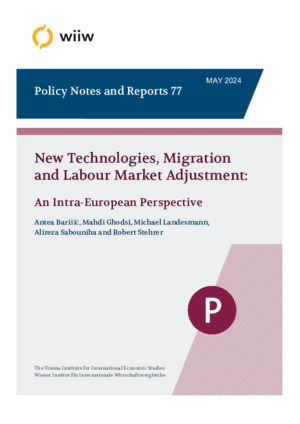New Technologies, Migration and Labour Market Adjustment: An Intra-European Perspective
Antea Barišić, Mahdi Ghodsi, Michael Landesmann, Alireza Sabouniha and Robert Stehrer
wiiw Policy Note/Policy Report No. 77, May 2024
23 pages including 2 Figure
In this note, we study the relationship between the use of new technologies (e.g. robots and various ICT assets), labour demand and migration patterns. The adoption of new technologies might change the demand for labour in various ways, which in turn will have an impact on skill composition and wage levels of different types of workers. We report the main results from a study that first analyses the impact of robot adoption on wages by sector and skills. Second, we study the impact of robot adoption in manufacturing industries on the attraction of migrants while controlling for other factors in the labour demand function. This is followed by an analysis of push and pull factors of bilateral migration that focuses on the impact of relative automation gaps across countries. Finally, using the OeNB Euro Survey, we examine determinants of the intention to migrate and the role of income differentials between the countries of origin and destination.
Keywords: Migration, migrant jobs, wages, employment, novel technologies, adoption of robots, digitalisation, European labour markets, Central Eastern European countries
JEL classification: F22, F66, J61, J24, J20, O33
Countries covered: non specific
Research Areas: Labour, Migration and Income Distribution
